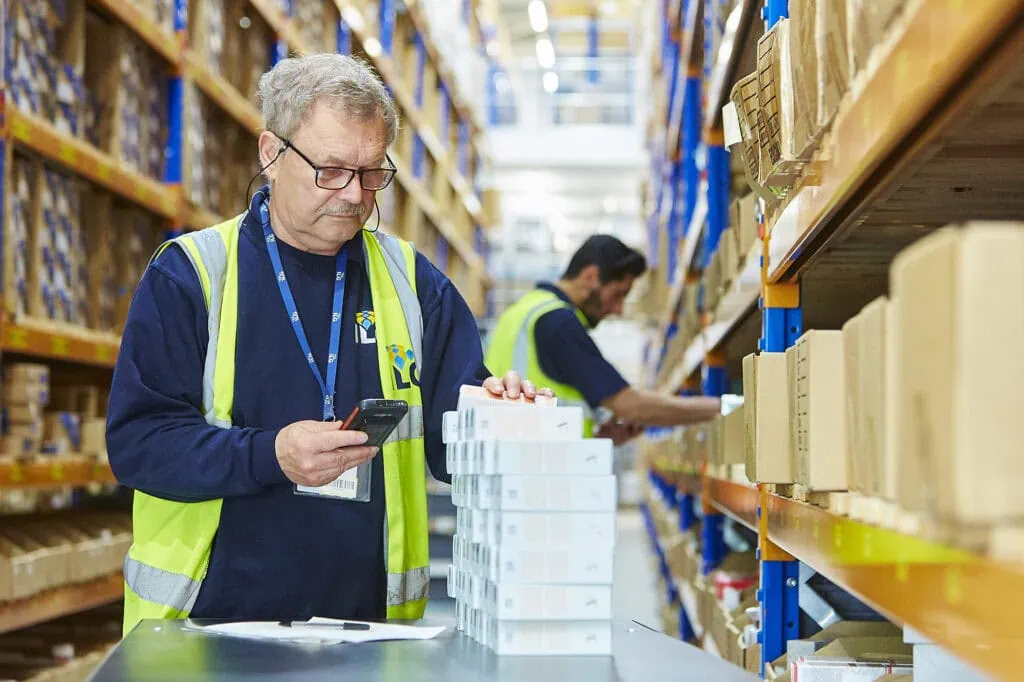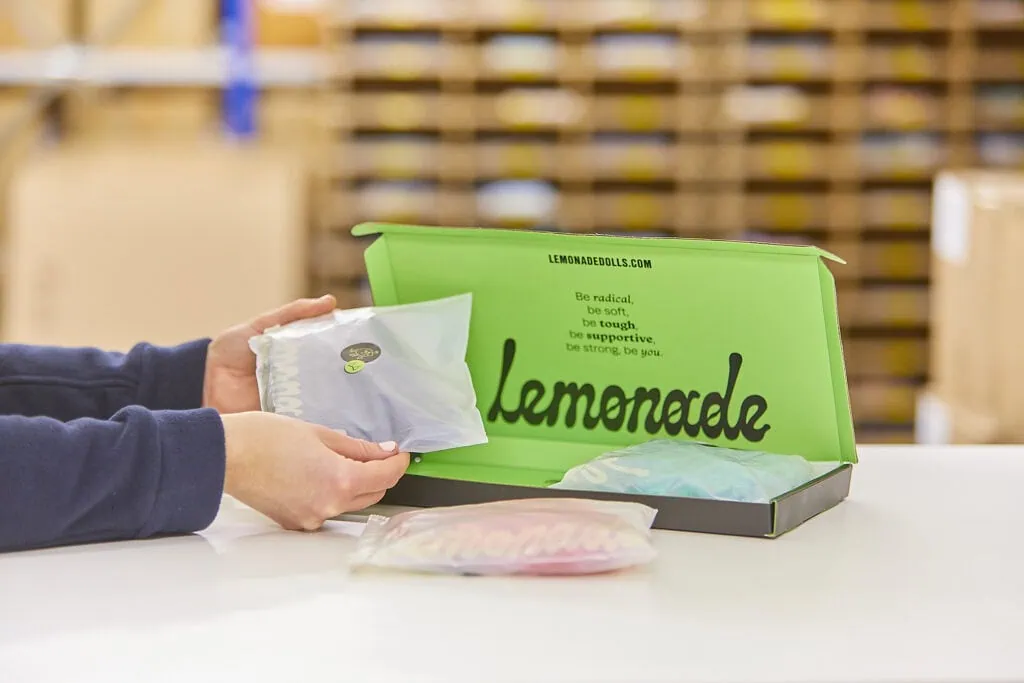
If you’re running operations for a growing brand, the run-up to Peak isn’t just busy – it’s brutal. Black Friday, Cyber Monday, Christmas, January sales…they’re pivotal moments that can make or break your year and business.
While customers are dreaming of perfectly wrapped packages arriving on time, Ops leaders can be wide awake at 2am wondering: Have we got enough staff? Enough stock? Enough space?
When you are up against it and it feels chaotic, there are things your company can still do now to support your operations team. Here we take a look at what’s really fuelling those sleepless nights across sectors and why you’re not the only one feeling the pressure.
Jump to:
- The Staffing Squeeze
- Stock Shortages and Forecast Fears
- Warehouse Space (or Lack of It)
- Returns: The Silent Avalanche
- Delivery Delays and Carrier Chaos
- Tech Growing Pains
- Cross-Border Complications
- FAQs
The Staffing Squeeze
Every Peak season, the scramble for warehouse and customer service staff gets harder. Recruitment is fierce, training windows are tight, and the reliability of seasonal workers is… let’s say ‘mixed’. One no-show or mis-picked order can set off a chain reaction that puts service levels at risk.
Quick win: Run a one-day ‘Peak readiness’ refresher for your core team now, focus on error hot spots (picking, packing, labeling) and assign clear back-up roles. Even two hours of cross-training now can save you days of chaos later.
Stock Shortages and Forecast Fears
Getting stock levels right is like walking a tightrope. Order too much and you’re left with piles of unsold inventory in January. Order too little and customers head straight to competitors. Add in unpredictable consumer demand and global supply chain hiccups, and Ops teams are left second-guessing themselves daily.
Quick win: Prioritize your top 20% of SKUs that deliver 80% of your Peak revenue, then share your updated demand forecasts with your 3PL. Keep them in the loop on when specific products are being discounted or promoted as it helps them plan staff and space to meet the sharpest demand peaks. A quick conversation now can prevent major bottlenecks later.
Warehouse Space (or Lack of It)
Whether it’s limited-edition gift sets, bulky homewares, or tech gadgets, everything needs somewhere to sit before it is shipped. The reality? Many warehouses are already full before Peak even kicks in. Managing storage, fulfillment and returns at the same time is like playing Tetris blindfolded.
Quick win: Reclaim space by pre-processing returns now. Consolidate slow-moving stock, clear damaged or obsolete goods, and free up racking for fast-turn lines. It’s the quickest way to create more capacity without moving premises.
Returns: The Silent Avalanche
For every outbound order, there’s a potential December / January return. Fashion and footwear might see sky-high return rates, but even wellness, beauty and homeware brands aren’t immune. Returns are expensive, complex, and disruptive and if the process isn’t seamless, customers notice.
Quick win: Map your returns journey from customer click to refund confirmation. Where’s the friction? A small tweak such as clearer return labels or auto-generated return emails can cut turnaround time and ease the January crush.
Delivery Delays and Carrier Chaos
No matter how slick your in-house ops are, the final mile is a gamble. Carriers hit capacity, weather disrupts services and even industrial action can stop deliveries arriving on time. When deliveries fail, it’s your brand, not the courier, that takes the heat.
Quick win: Set up proactive delivery comms now. A simple SMS or branded tracking link can defuse 90% of WISMO (“Where is my order?”) tickets before they hit your inbox and keep customer satisfaction high when delays do happen.
Tech Growing Pains
Some brands still head into Peak relying on clunky systems or spreadsheets. Disconnected platforms, patchy integrations, and slow reporting mean leaders can’t see what’s happening in real time which is exactly when visibility matters most.
Quick win: Build a simple live dashboard (even a shared Google Sheet) that pulls order volume, dispatch times, and returns rates daily. One glance gives your team the control you’ll need when things go sideways.
Cross-Border Complications
For brands selling internationally, Peak stress multiplies. Customs bottlenecks, VAT compliance, duties and delays all conspire to slow down fulfillment. Ops leaders face the impossible task of keeping customers happy across multiple territories while dealing with red tape.
Quick win: Review your international delivery matrix now to double-check duty thresholds, lead times, and carrier cut-off dates by region. Publish those dates clearly on site and in comms to manage customer expectations before Peak hits.
FAQs: Peak Season Survival (Without Losing Sleep)
When should I really start planning for Peak?
Earlier than feels comfortable. Six months out is gold standard. But even if you’ve left it late, small tweaks (like lining up extra carrier options or pre-training a pool of temps) can still save you headaches.
What’s the sneaky risk most people forget about?
Returns. January can undo all the good work of December if your returns process is clunky. Customers remember a bad returns experience far longer than a late delivery.
We never have enough staff, how do I cope?
Cross-train your core team so they can flex into critical roles when the pressure’s on. Some brands even draft in office staff to the warehouse for the mad rush. Not glamorous, but it works.
Is bringing in a 3PL right before Peak realistic?
Not really. By October, the horse has bolted. But it’s the perfect time to line up a 3PL partner for next year. That way, you don’t roll into another Peak season carrying the same baggage.
Wishing Your Business a Positive Peak 2025
Peak season doesn’t have to mean sleepless nights. But the reality is, without the right people, processes and partners, many brands are heading into the busiest time of year on shaky ground.
The businesses that thrive are the ones who accept they can’t control everything but they can prepare, plan, and put the right support in place before it’s too late.
This year, the wheels are already turning. Peak 2025 will play out as it always does, with its highs, lows and frantic moments. But once you’re through the returns haze of January, that’s the time to pause, breathe, and start planning for a smoother Peak 2026. And we’ll be here to have the conversation.
Contact Us
More insights >
Understanding MOQ and its Impact on Your Supply Chain Strategy
Understanding MOQ is critical for your business, and this guide will tell you all you need to know.
What to Expect When Outsourcing Fulfillment for the First Time
Outsourcing fulfillment can feel like a big leap, here’s what you can expect when outsourcing for the first time and how we make it work for our clients.

